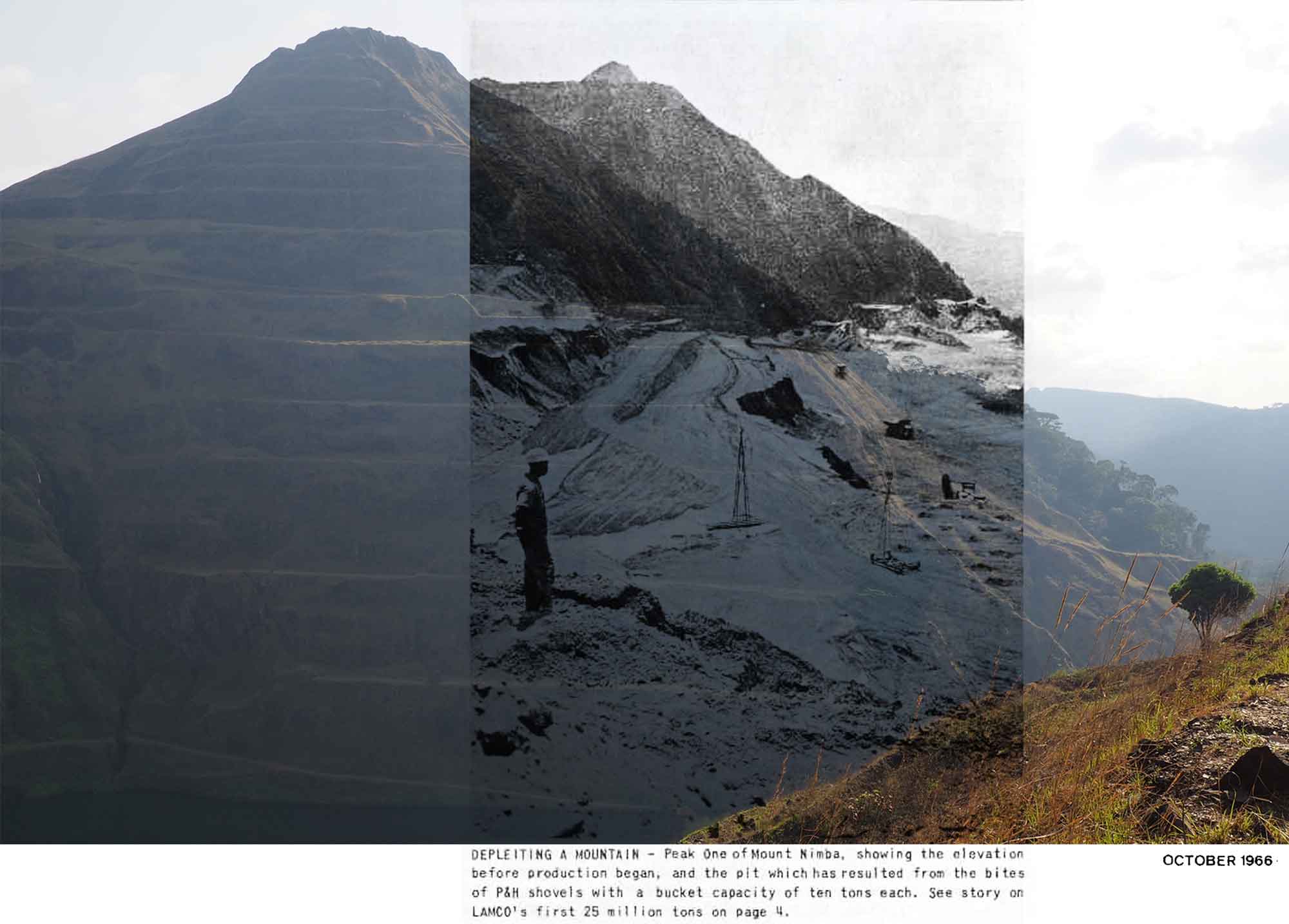
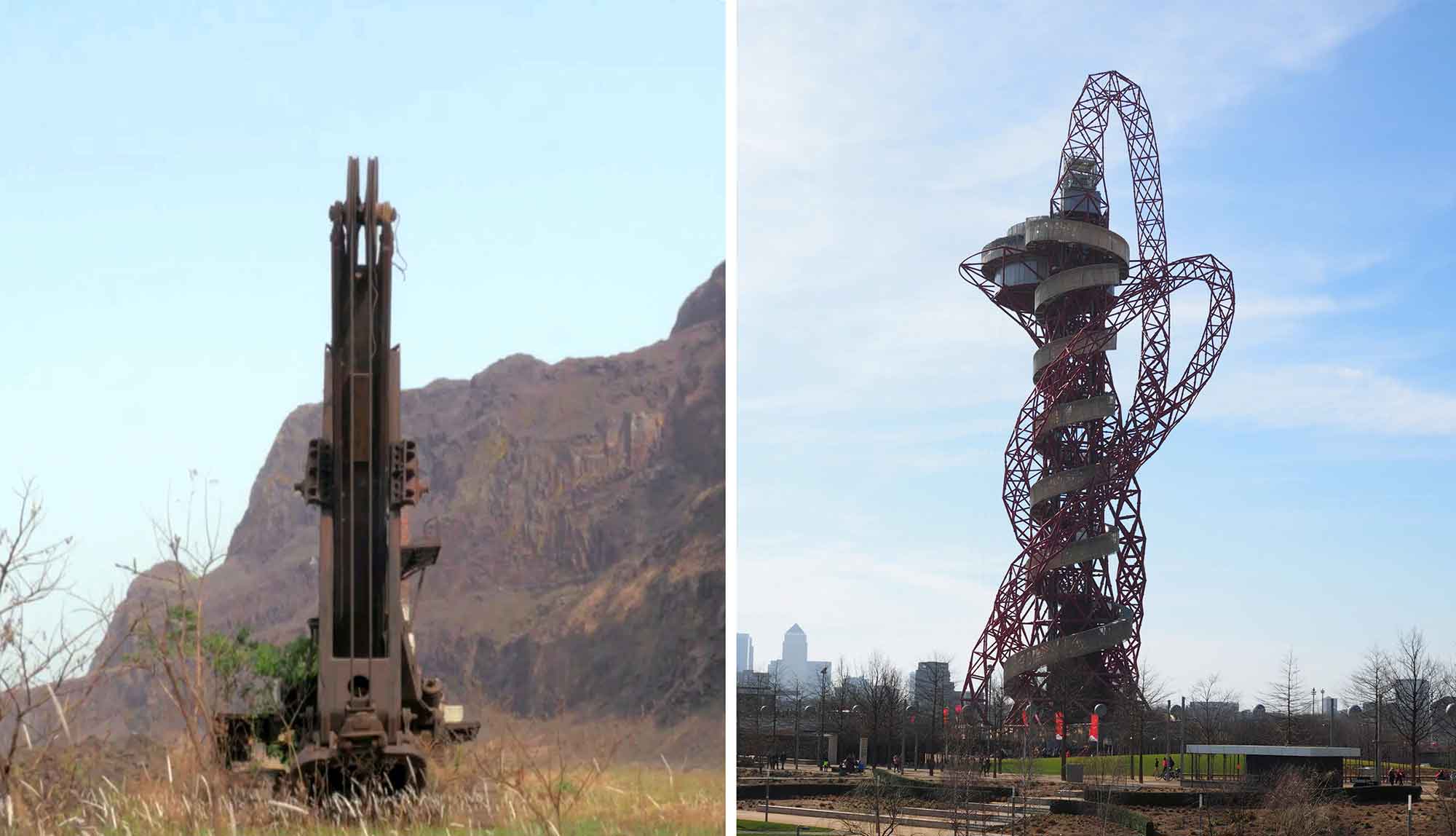
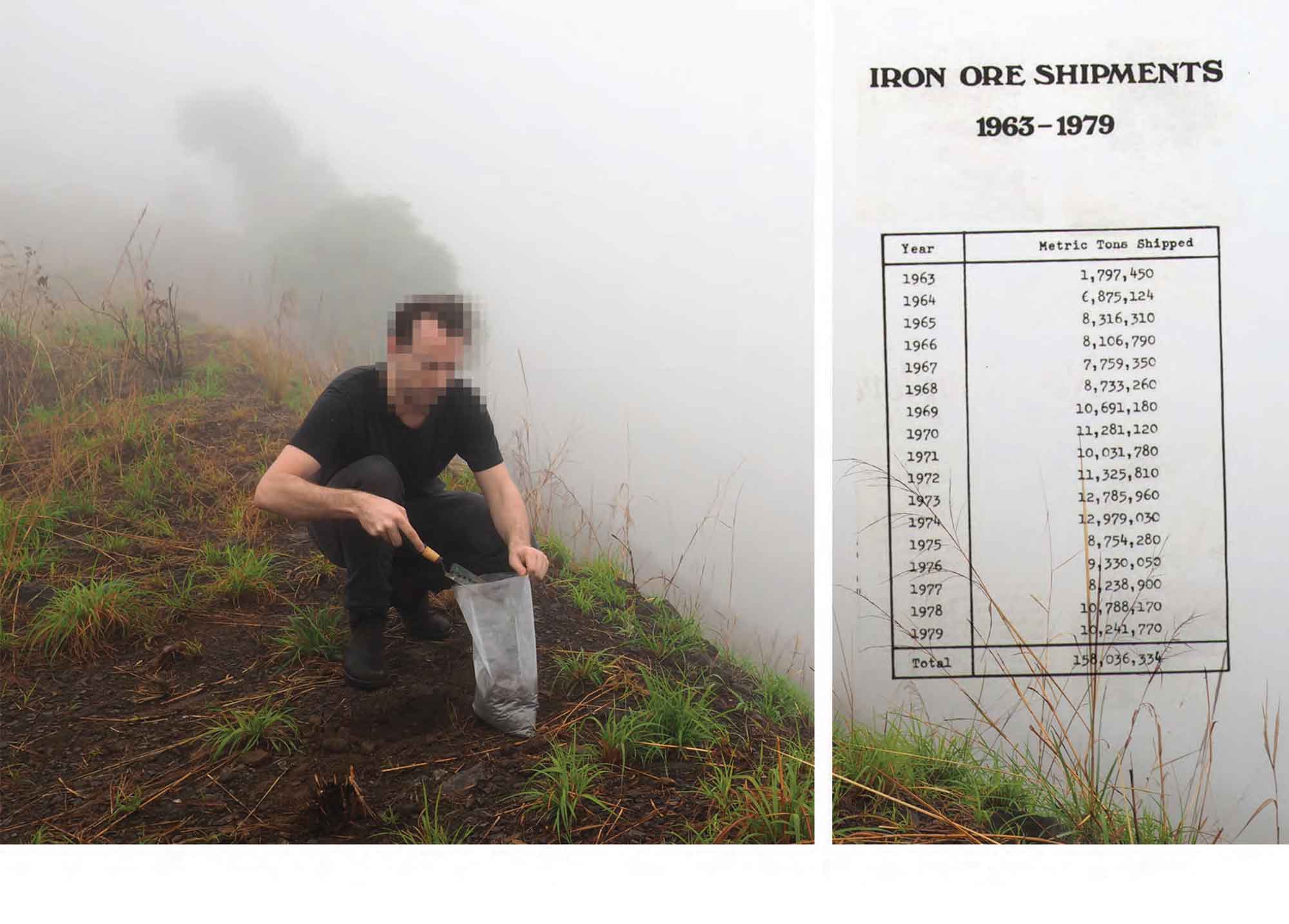
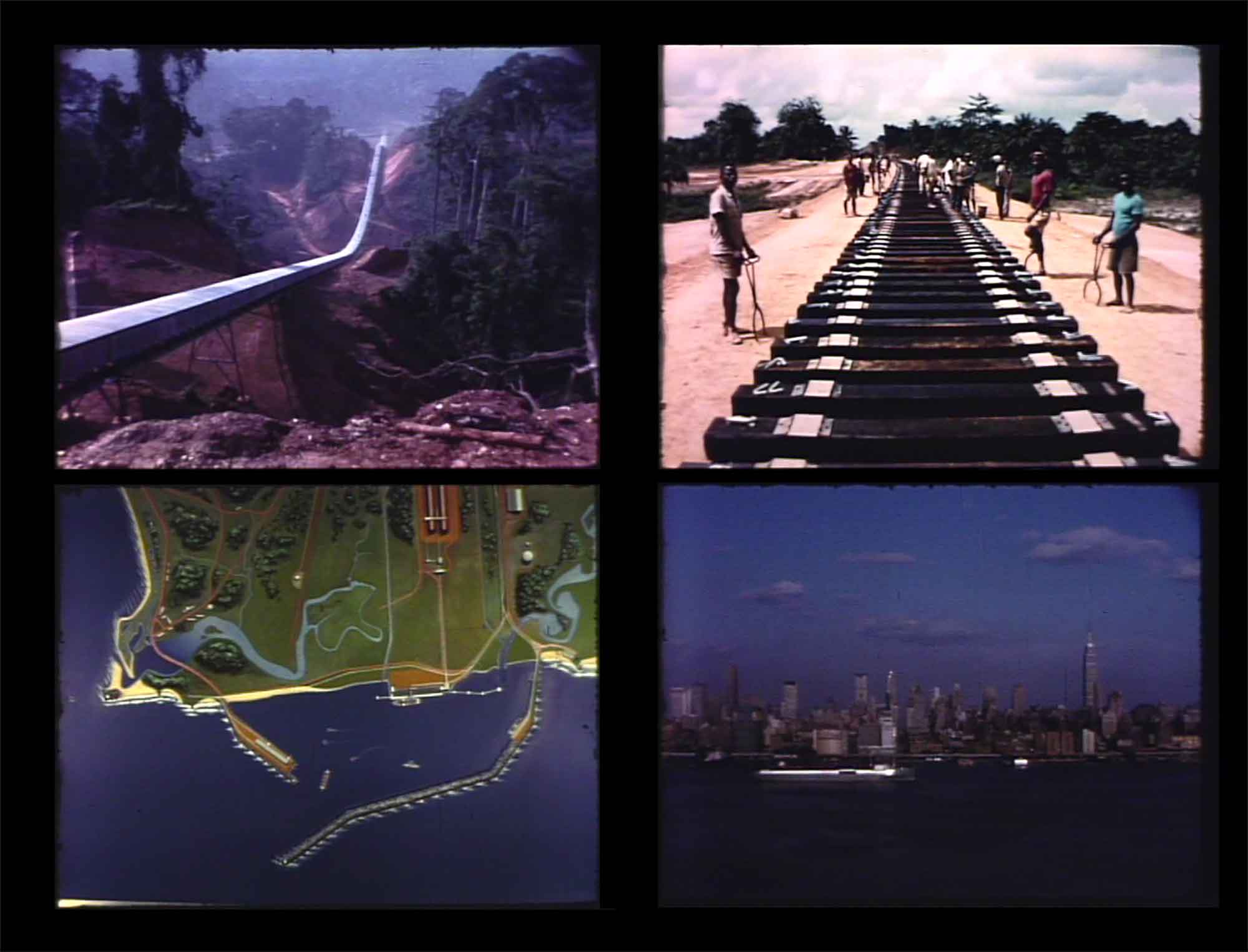

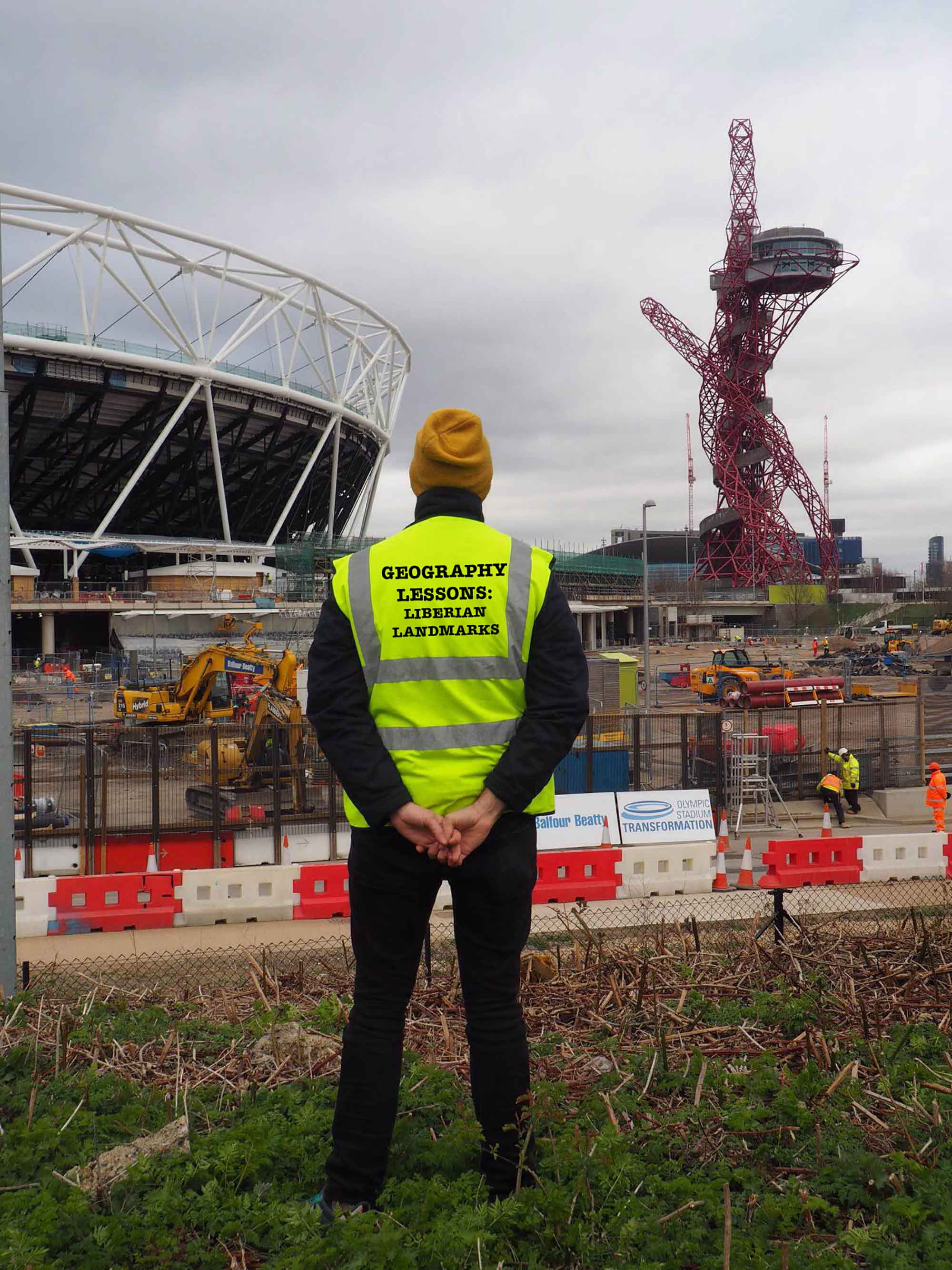
‘Our Conversation took about 45 seconds. I explained the idea, which took about 40 seconds. ‘Great I’ll give you steel’ he said and that was it. In reality Arcelor Mittal has given so much more than the steel.’
Boris Johnson, Mayor of London on procuring the steel for the Orbit
‘I wanted the sensation of instability… Like a Tower of Babel, it requires real participation from the public’ (1)
Geography Lessons: Liberian Landmarks responds to two seemingly unconnected sites – ‘landmarks’ – an iron-ore mine in Liberia and Britain’s largest piece of public art.
The mine, formerly Mount Nimba, was the design of the Liberia-American-Swedish Mining (LAMCO) Company, built alongside the 1960’s new-town of Yekepa. LAMCO economised these ‘vacant’ landscapes and inhabitants as part of a broader project to re-engineer Liberia along Western lines.
Depleted of ore, at the onset of the 1989 Liberian Civil war, LAMCO abandoned Yekepa. In 2010 Yekepa was reclaimed by Arcelor Mittal – the largest producer of structural steel and joint-commissioners of the ‘Orbit’. (2) Designed by Anish Kapoor, The Orbit lies at the centre of land revitalized for the 2012 London Olympics, in East Stratford, where UCL have since expanded.
Arcelor Mittal have a 25-year mining concession for an uninterrupted supply of iron-ore in exchange for a ‘Social Corporate Responsibility’ package inclusive of revitalizing Yekepa. Following Ebola, the offshoring of profits to low-taxation enclaves and an unstable global iron-ore market, Yekepas revitalization is pending.
Standing at 114.5 metres high The Orbit is Britain’s largest piece of public art. Constructed out of 2,000 tonnes of steel, 60% is claimed as recycled. The scar from mining at Yekepa stands 250 metres deep and 4 km2 in area. The Elizabeth Olympic Park (6.5sq km), producing displacement and privatizing public space, is considered one of the least used urban spaces within London. (3)
Where physical geography is understood as the proximate arrangement of environmental features and places, ‘Geography Lessons’ couples the remote and invisible margins of Liberia’s extraction industries to The Orbit, revealing ideological performance of architecture/art common to utopias.
The void of the mine in proximity to the solidity of The Orbit, as opposite ends of the extraction process, articulates the structural unevenness of exchanges between the Global South and North that prevail today. Using a landscape model, photos and soil-samples from the mine at Yekepa, Geography Lessons are presented to the public at the foot of the Orbit. This project is the precursor to Uppland.
(1) Anish Kapoor on conceptual underpinning of the Orbit
(2) Then Mayor of London, Boris Johnson was also part of the commissioning team
(3) See Guardian ‘Legacy, what legacy? Five years on the London Olympic park battle still rages’. Accessed here at https://www.theguardian.com/cities/2017/jul/27/london-olympic-park-success-five-years-depends
Killian Doherty is a qualified architect that practices in Sierra Leone, Liberia, and Rwanda. Through his practice, ‘Architectural Field Office’ he explores how in ‘development’ policies produce unevenness within cities, settlement and land-use practices in the Global South. His architectural work, teachings and research have been exhibited at the ICA, the Venice Architecture Biennale and appear in Japan Architecture + Urbanism (JA+U), Architectural Review, MAS Context, Footprint: Delft Architecture Theory Journal, VOLUME and ‘Afritecture: Building Social Change.
Killian is completing his PhD by Design at the Bartlett School of Architecture (UCL) and attended the MA Architectural History/site-writing class in 2015. He is currently Lecturer in Architecture and Urbanism at the Edinburgh School of Architecture and Landscape Architecture (ESALA).
As a European architect practicing within the ‘development’ environments of Sub-Saharan Africa I struggle to find a neutral-objective voice. Development is fraught with civilizing pathologies of colonialism that are obscured by neo-liberal discourses of humanitarianism and prosperity. Through critical spatial practices, my work has been able to find a distance between my traditional role as designer of buildings in these contexts and this voice, but within close proximity to understand the relations between ‘development’ built environments and colonial histories, discourses and sites of exploitation.
Derek Gregory, ‘Dream of Liberty?’ in Geographical Imaginations (Cambridge, Mass.: Blackwell, 1994) pp. 328–347.
Allan Sekula, Geography Lesson: Canadian Notes /Allan Sekula, with essays by Gary Dufour and John O’Brian (Vancouver; Cambridge, Mass.; London: Vancouver Art Gallery and MIT Press, 1997).
A happening by Allan Kaprow, Baggage (1972 – 2007/08) reinvented by Otobong Nkanga
http://www.otobongnkanga.com






































































